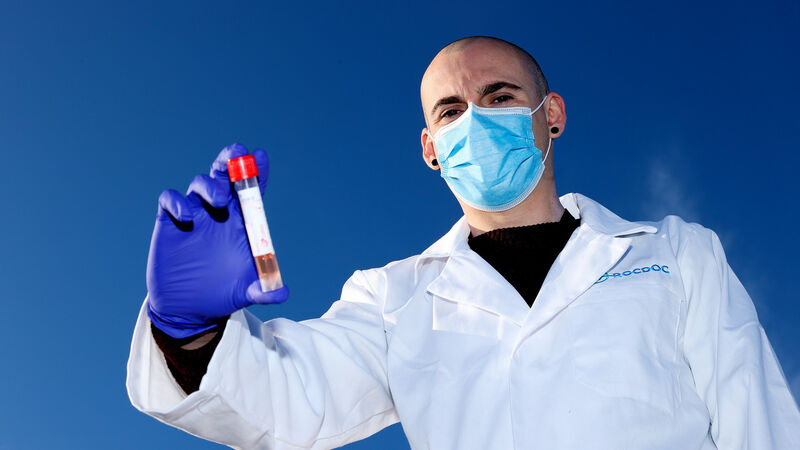Appliance of Science: How does an RNA vaccine work and how close are we to a Covid-19 vaccine?

Cathal Fahey, Lab Scientist, RocDoc, Dublin Airport. Pic: Maxwells
We all have a fair idea of what a vaccine does, but we may be unsure of the finer details. A vaccine is a biological preparation that aims to protect us against a specific disease. The concept is to introduce something into the body that triggers our immune systems to produce antibodies. These antibodies can then recognise and attack a specific pathogen (like a virus) if it does ever enter the body. A vaccine allows our immune system to learn how to fight that specific pathogen without actually having to contract the disease.
Usually, the thing we introduce into the body is the pathogen itself, either dead or in a weakened form. But there are other options available and one in particular, RNA, is the cause of all the current hype.
Two groups involved in Covid-19 vaccine trials have reported very significant results in the race to find a vaccine for this disease. They are Pfizer-BioNTech and Moderna. Both these trials use mRNA vaccine technology. Although this method has been researched for decades, it has never been approved for humans before.
mRNA stands for messenger ribonucleic acid: it is a small segment of genetic material that carries the instructions for protein making from the genetic template in the nucleus of the cell (the DNA) to the protein-making processes in the cytoplasm of the cell.
The genetic code for SARS-CoV-2 has been sequenced and the code for each of its component parts is known. One particular component of the virus is the spike protein, involved in attaching the virus to our own cells once it enters the body. The instruction code for making the spike protein has been encoded into mRNA, and this is what is used in these vaccines to elicit the immune response.
The packaged mRNA is injected into the body. The mRNA code allows the protein-making mechanism within our cells to make spike protein and then our immune system creates the antibodies against it.
The intention is that these antibodies against the virus’s spike protein will recognise and attack the virus if it infects the body at a later stage. The recent reports from both Pfizer-BioNTech and Moderna claim the vaccine does exactly that, with an efficacy of over 90 percent.
One of the good things about mRNA vaccines is that we don’t need to make the virus itself in order to create the vaccine. mRNA is relatively simple, cheap and quick to make so the vaccines can be manufactured in higher quantities to better meet global demand.
As the vaccine doesn’t contain the virus, recipients cannot get infected by the vaccine. Some people worry that a vaccine will alter our DNA but this is not possible; the mRNA does not enter the cell nucleus where our DNA is contained.
mRNA is not a very stable molecule so it will break down over time, meaning it will not build up in our cells. This instability does pose other issues though, notably the need to store the vaccine at very low temperatures (-70C for the Pfizer/BioNTech vaccine and -20C for the Moderna one).
mRNA vaccine technology is relatively new. The trials are not yet complete and full data is not openly available. It is still to be determined how long the antibodies last or if the vaccine will prevent recipients spreading the disease. More time and scrutiny are required before these vaccines are ready for possible approval but the signs are very hopeful.






